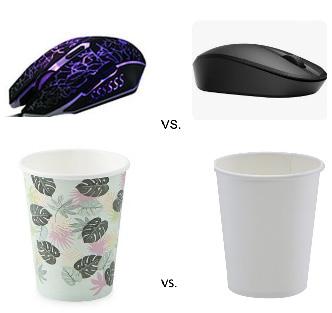
2 minute read
PURCHASE INTENTIONS OF AESTHETIC GOODS FROM THE PERSPECTIVE OF PERCEIVED QUALITY AND DURABILITY
People believe that beautiful things function well. Aesthetically pleasing products are characterised by rich colours and patterns that capture the attention of consumers, thus leading to potential purchases.
Perceived quality represents the consumer’s cognitive assessment of the intrinsic core benefits of a product. In simpler terms, a consumer’s judgement of a product’s overall excellence or superiority. There is a significant difference between perceived and actual quality. Many factors such as personal preference, price, brand, etc., influence consumers’ perception of the quality of product. Design aesthetics are external cues that help people assess quality but are not the decisive factor affecting perceived quality portfolio. So, the interplay between aesthetic design and perceived quality is very important for purchase intention.
Advertisement
Simple and minimal design may help improve perceived quality. Steve Jobs’s legacy comes down to simplicity—a quality that stands out in an overly complex world. Apple revolutionised the business sector with its search for simplicity. Apple always projected its products to look clean and simple, thus creating an impression for quality luxury. By contrast, an aesthetic design that incorporates enriched patterns, colors, flashlights, or shapes may elicit some negative emotions leading to perceptions of low quality, childish or cheap materials.
Durability refers to the ability of products to remain serviceable and withstand physical damage over a period of life. Consumers usually buy durable and non-durable goods for different purposes and motivations. As such, the evaluation and reasoning of the perceived quality and purchase intention of these two types of products are also different. Consumers place great emphasis on design (aesthetics) and quality (high) when purchasing durable goods, but spend less time choosing or making habitual purchases when purchasing non-durable goods, since convenience (ease of use), accessibility or functionality are more important criteria.
Consumers may not be motivated to buy aesthetically pleasing, non-durable products. For example, in the case of beautifully designed and expensive disposable plates, consumers know that the beauty of the plate will create a sense of enjoyment, but they are still hesitant to buy it because the enjoyment and beauty of design will not last long. Moreover, consumers are not always willing to pay high prices for disposable products like paper cups considering the short product lifetime.
Consumers buying non-durable aesthetic products often try to reserve the product for a period. This reduces their consumption rate in the end. For example, consumers buy aesthetically designed soaps or candles less frequently than regular soaps or candles. Therefore, beauty soap/candle loses its competitive advantage in consumption rate and purchase possibility compared with ordinary ones.
It is important to learn about the effect of design on perceived value because suppliers compete for aesthetic designs to appeal to consumers. But this approach may not work well without considering the characteristics of the product and the basic purchasing needs of the customer. Instead of focusing on improving aesthetic design and forgetting its emphasis on perceived quality, marketers should focus on strengthening the match between design and quality perception. A simple and clear design does not necessarily mean low quality, and sometimes a complex and beautiful design does not mean high quality. Marketers should decide on product designs that contribute to high perceived quality based on the product types.

The persistence and dedication of the scientific community continues to inspire me to remain motivated and optimistic as we work together to surpass adversity.









